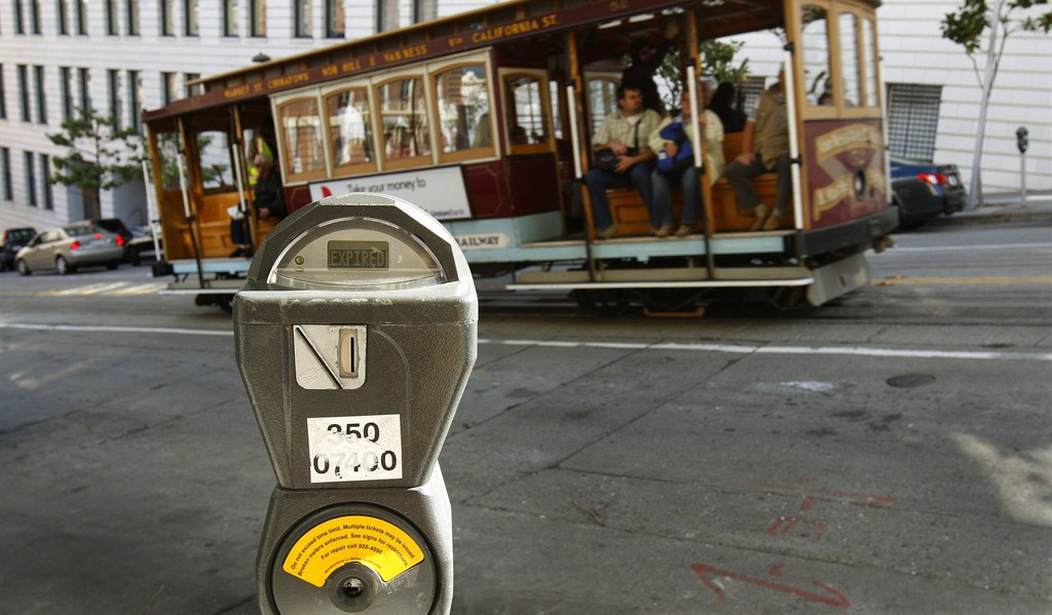The doom loop hasn't doomed San Francisco yet, but there are still ominous signs that it hasn't been completely avoided either.
Regular readers will know that the concept of a doom loop has a number of moving parts. Fewer workers downtown leads to empty office buildings and closing businesses as, without as much foot traffic, many of those businesses can't survive. All of this also leads to a downturn in taxes (much of which comes from commercial real estate and business taxes) leaving the city less money to fund public services like public safety, street cleaning, homeless services and public transportation.
The loop part of the "doom loop" comes from the idea that as taxes decline and public services with them, ever fewer people will want to visit downtown. But the real make or break factor could be public transportation. Making it less convenient or more expensive to bring people into the city is potentially a game changer. Each time you cut service, you are making it less likely that the city can recover from its other problems. It locks in the economic downturn and points the city in a bad direction economically.
In San Francisco, there is still a real chance that could happen. This week the San Francisco Municipal Transportation Agency (SF Muni) warned that it was facing big budget deficits that would necessitate major cuts in services unless new funding can be found.
Agency staff said Wednesday during a weekly meeting of the Muni Funding Working Group — a coalition of city leaders and members of the public dedicated to identifying solutions and providing recommendations to address what is projected to be an up-to-$322 million shortfall SFMTA faces in the fiscal year beginning July 1, 2026 — will reduce the frequency of buses and stops on a handful of lines early next year...
San Francisco Chief Economist Ted Egan said Wednesday that although rider habits have changed substantially since the COVID-19 pandemic, Muni remains as vital as it has ever been to San Francisco’s economy.
“The City’s recovery really hinges on how accessible we make San Francisco to work, shopping, and recreational opportunities,” Egan said.
There is no city-wide recovery without public transportation, but there's also no clear source of money to replace what has been lost by a decline in ridership. California is facing its own big budget deficits which mean help probably won't be found there and the election of Trump (plus GOP control of the House and Senate) means federal help is also very unlikely.
The director said former President Donald Trump winning reelection likely means federal assistance wouldn’t be available, and California’s own budget deficit could impact how much assistance the state is willing to provide its hamstrung public-transportation operators.
What's left is the necessity of major cuts to service. The SF Muni budget is about $1.4 billion per year. With expected deficits of around $300 million per year, that means you need to cut about 21% of your budget. There's just no way to do that without major changes.
Suspending three cable car lines — California, Mason and Hyde — and the F Market streetcars would save an estimated $33 million annually but could have severe negative effects for tourism, staff said.
Cutting service frequency on the busiest lines such as the 1, 14 and 38 buses and six lettered light rail lines by up to 50% could save up to $71 million annually. Buses could come every 10 minutes instead of every 5 to 6 minutes, while light rail could shift from every 10 to 15 minutes to every 12 to 20 minutes, staff said.
Suspending bus routes with lower ridership including the 1X, 2, 6, 12 Short, 16, 21, 27 and 31 lines would save an estimated $32 million a year. Suspending bus routes in hilly neighborhoods mostly on the southern half of the city could lead to $31 million in additional savings.
That sounds like a lot but add all of that up and you're only at $170 million, not really that close to the $300 million in cuts that may be needed. SF Muni's director summed it up this way, "If we fail to come to an agreement and we fail to win (more funding), we will need to make massive service cuts."
Again, the point is that once these cuts are made they are going to have an impact on the entire city. Fewer tourists will visit if the cable cars are cut. Fewer people will take public transportation if there is a long wait between trains or simply no bus route at all from their neighborhood. It's impossible to calculate the impact in advance but clearly you're going to have less traffic downtown if these cuts happen.
And that brings us right back to the top of the doom loop, i.e. there aren't enough people downtown to support local businesses which means fewer businesses to pay the taxes that fund most city services. The more the downtown empties out, the fewer tourists want to visit and the fewer big organizatons opt to hold their annual conventions in the city. So keep your eye on public transportation is SF. If that starts to wind down, other things in the city are almost guaranteed to follow.








Join the conversation as a VIP Member